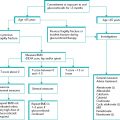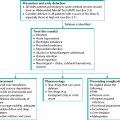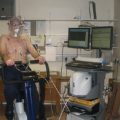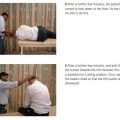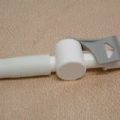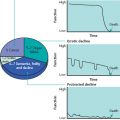An overview of syncope
The word ‘syncope’ is derived from the Greek ‘syn’ (with) and ‘koptein’ (to interrupt). It is characterised by transient, self-limiting loss of consciousness, usually leading to a fall. The onset is relatively rapid and recovery is spontaneous, complete and usually prompt. Syncope is always the result of transient global cerebral hypo-perfusion, and there are different causes.
Syncope accounts for up to 5% of emergency department visits, and can have a major impact on lifestyle. In older people its prevalence is higher, injuries and loss of confidence are more common, and so is admission to hospital. Isolated episodes are common. If a person has experienced more than one episode, it is more likely to recur. The prevalence of syncope in older people may be underestimated because it can also present as ‘falls’ because of retrograde amnesia or lack of eye witnesses.
Older people are at higher risk of syncope because of age-related physiological changes in heart rate, blood pressure, cerebral blood flow, baroreceptor sensitivity and blood volume regulation. In addition, they have a high prevalence of diseases that can predispose to syncope and are often taking several prescribed medications.
Figure 6.1 The different causes of transient loss of consciousness. A transient ischaemic attack (TIA) causes loss of focal neurology rather than loss of consciousness. Posterior circulation TIAs can cause transient loss of consciousness, but this is in addition to other neurological symptoms and signs.

Figure 6.1 shows the main causes of collapse, divided into syncope and non-syncopal attacks. The four main categories of syncope are also shown.
Neurally mediated syncope refers to vasovagal syncope (fainting) and situational syncope (e.g. micturition syncope). A neurally mediated reflex is triggered, leading to vasodilation and bradycardia (vagal stimulation), causing hypotension and cerebral hypoperfusion. Carotid sinus hypersensitivity is also neurally mediated. In this case the reflex is triggered by pressure on the carotid body.
Postural (orthostatic) hypotension is the result of impaired autonomic reflexes, leading to pooling of blood in the veins of the lower limbs. Volume depletion is another cause.
Tachy- or bradycardias can reduce cardiac output, leading to cerebral hypoperfusion and syncope. Structural cardiopulmonary disease can also lead to syncope when there is an impaired ability to increase cardiac output (e.g. in aortic stenosis or hypertrophic obstructive cardiomyopathy). Figure 6.2 outlines the main categories of syncope in more detail.
Figure 6.2 The main causes of syncope.
* A range of acute illnesses can cause syncope, including infection, dehydration, acute cardiac ischaemia, haemorrhage, aortic dissection and pulmonary embolism.
** A normal electrocardiogram virtually excludes a cardiac cause of syncope.

In older people, the most common causes of syncope are:
- postural hypotension (20–30%)
- carotid sinus hypersensitivity (20%)
- cardiac arrhythmias (20%)
- vasovagal or situational syncope (15%).
This is different to young people in whom vasovagal and situational syncope are far more common and carotid sinus hypersensitivity is extremely rare.
How to assess a patient with a collapse
A thorough history is essential in the evaluation of any collapse. A detailed account of the incident from the patient, and any available eye witnesses (over the telephone if necessary) is crucial. Past medical history, medications, cardiovascular and neurological examination, lying and standing blood pressure and 12-lead electrocardiogram are the other essential components of the evaluation. Patients should also be asked about their social circumstances and whether or not they drive. Box 6.1 outlines the key questions that should be asked in the history. Syncope is characterised by a brief loss of consciousness, with few abnormal movements, pallor and a quick recovery. Box 6.2 outlines the main differences between syncope and seizures.
If the history suggests syncope (as opposed to a seizure or other non-syncopal attack), the key questions are as follows.
After a full history, examination, lying and standing blood pressure and 12-lead electrocardiogram, the cause of syncope will be apparent in at least one-third of cases. For example, syncope due to postural hypotension as a result of medication is common in older people. This can be diagnosed and treated without further tests.
Box 6.1 Key questions in the history
Questions about before the attack
- Position (lying, sitting or standing)
- Activity (e.g. change in posture, during or after exercise, micturition)
- Predisposing factors (e.g. warm environment, prolonged standing)
- Precipitating factors (e.g. unpleasant stimuli, concurrent illness, chest pain, neck movements)
- Prodromal symptoms (e.g. feeling warm, nauseated, blurred vision)
The four Ps are strongly suggestive of vasovagal syncope: upright position, predisposing factors, certain precipitating factors (those not in italics) and a typical prodrome.
Questions about during the attack (from an eye witness)
- How the person fell (floppy or rigid)
- What colour they were (white or blue)
- Whether they were allowed to lie flat or someone held them upright
- The presence of any tonic-clonic movements and their duration
- Any injuries or incontinence
Questions about after the attack
- What the person was like when they came round
- How long it took to recover
Background questions
- History of cardiac disease
- Past medical history
- Medications
- History of previous collapses and their circumstances
- Whether or not the person had a tendency to faint when younger
- Whether or not they go dizzy on standing quickly or after standing for a long time
Patients with structural heart disease and syncope have a higher mortality (see Box 6.3
Stay updated, free articles. Join our Telegram channel

Full access? Get Clinical Tree


